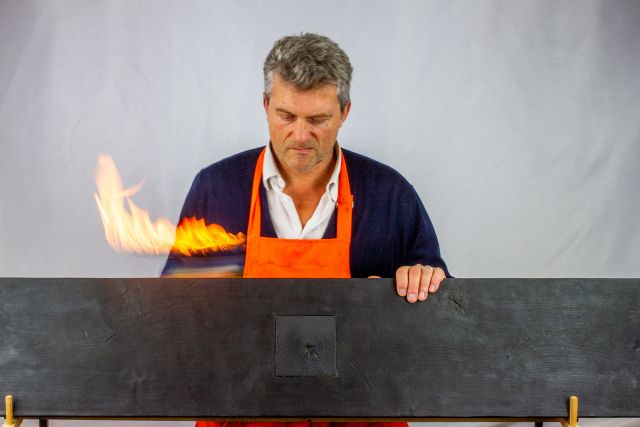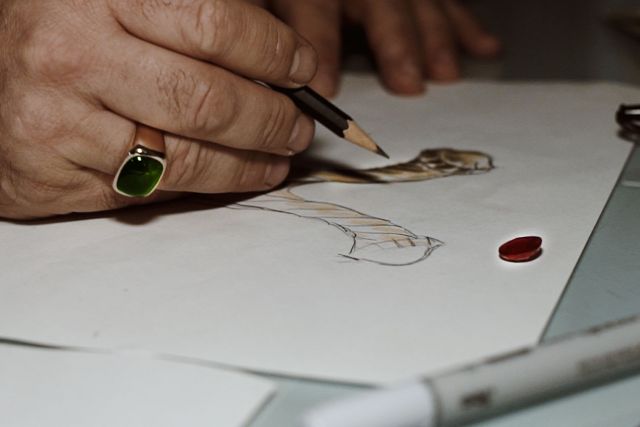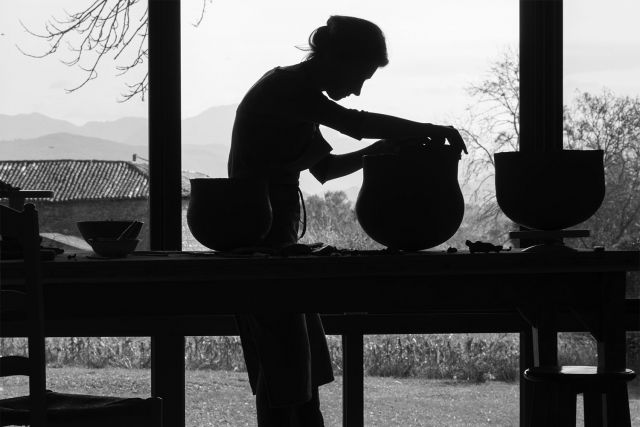Part of Oscar's Structure series, this unique dark red vase was sculpted by twisting, cutting and assembling multiple small rods of coloured glass called murines. They were then rolled onto the blowpipe and blown into the final shape.
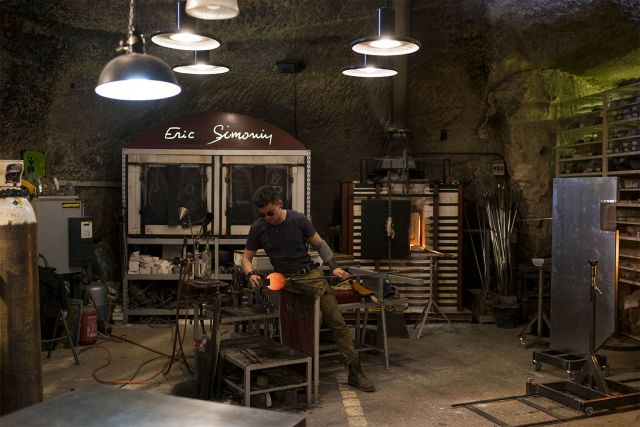
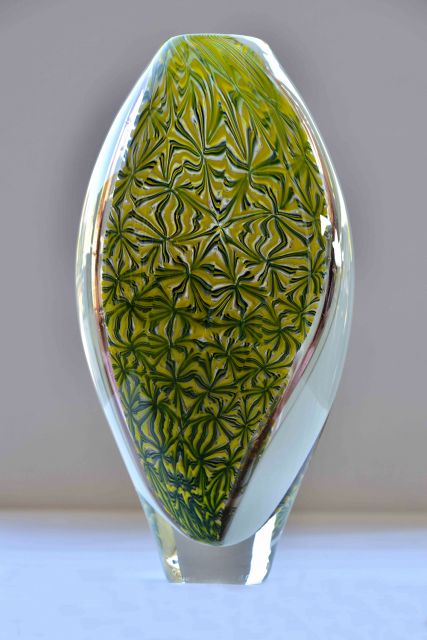
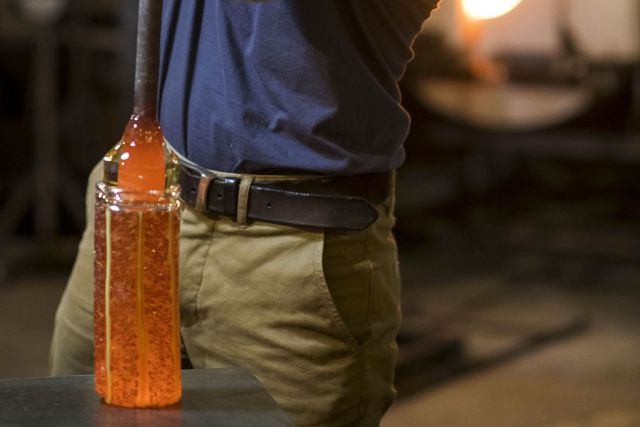
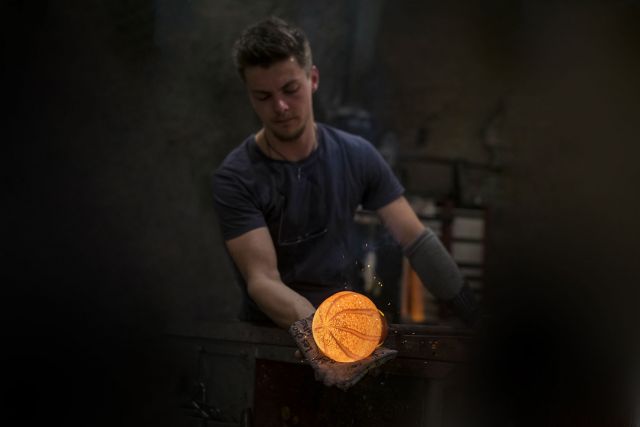
Oscar Simonin
- Glassblower
- Brantôme, France
- Rising Star
By appointment only
+33 672047826
Crafting with heat and colour
- • Oscar fell in love with glassblowing when watching his father at work
- • He feels patience and persistence are essential to the craft
- • He works in small series, exhausting a specific idea or theme
“A finished piece must cool slowly over 24 hours, degree by degree. If it cools too quickly, the heart of the object can break into thousands of pieces.” When discussing his craft and the techniques involved, Oscar Simonin’s voice reflects his love for glassblowing. He describes his workshop’s two furnaces, the molten glass, the way he must roll the cooling glass and shape it with his various tools. “I fell in love with this work as a young child and I can’t think of anything else I would want to do,” he says. He did his degree at a specialist glass arts school in France before completing several apprenticeships to master his craft. Very inspired by nature, he innovates within thematically based series.
Read the full interviewWorks
Photo:

Photo: © All rights reserved
Part of Oscar's Structure series, this unique vase was sculpted by twisting, cutting and assembling multiple small rods of coloured glass called murines. They were then rolled onto the blowpipe and blown into the final shape.

Photo: © All rights reserved
Part of Oscar's Structure series, this unique vase was sculpted by twisting, cutting and assembling multiple small rods of coloured glass called murines. They were then rolled onto the blowpipe and blown into the final shape.

Photo: © All rights reserved
Part of Oscar's Structure series, this unique vase was sculpted by twisting, cutting and assembling multiple small rods of coloured glass called murines. They were then rolled onto the blowpipe and blown into the final shape.





